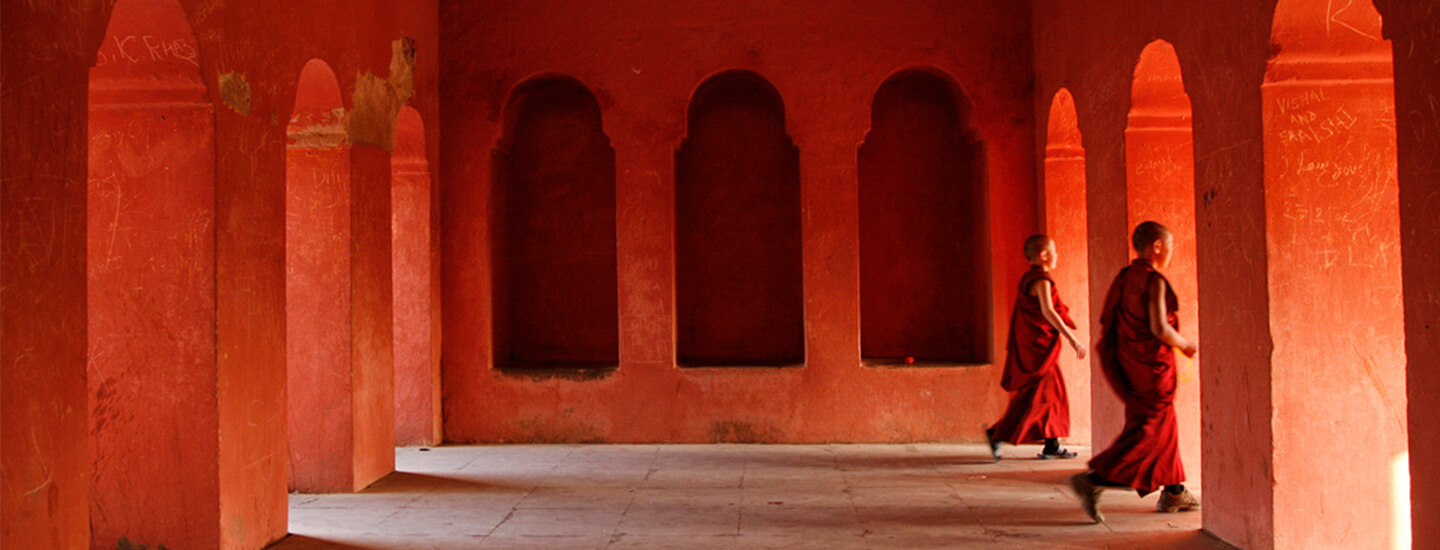Monasteries
The people of India forgot the Buddha but he was worshipped n the countries where Buddhism had spread – like China, Tibet, Sri Lanka and Burma. Pilgrims came here and the Burmese king even tried to save the ancient temple. In the twentieth century Bodh Gaya has become the most popular Buddhist pilgrimage and devotees of many countries have built monasteries here. Most monasteries offer meditation and vipassana courses for devotees.
These viharas are worth visiting for their variety of architectural and sculptural styles that reflect the religious traditions of these countries. The oldest viahara was built by the Tibetans in 1932 and the Burmese followed in 1934. The Tibetans built the Mahayana Vihara called Gelug Pa, the Karmapa temple and the Sakya monastery. In the sanctum of the Mahayana Vihara is a golden image of the Maitreya Buddha wearing golden garments and a bejewelled crown. Outside are the traditional prayer wheels – giant metal drums that devotees spin as they chant prayers.
The Thai monastery has red curving roofs gilded with pretty patterns in the style of their pagodas called wats. The Japanese have built the Indosan Niponji temple with a beautiful image of the meditating Buddha in the sanctum. The Burmese vihara is the oldest in Bodh Gaya and there are viharas built by Sri Lankans, Chinese, Vietnamese and the Nepalese.
The most eye catching sight in Bodh Gaya is a giant image of the meditating Buddha in the dhyana mudra – sitting cross legged, his eyes closed and with his hands in his lap. This giant image sitting under the open sky is twenty five metres tall. The impressive image is carved in the Japanese Kamakura style and was unveiled by the Dalai Lama in 1989.


